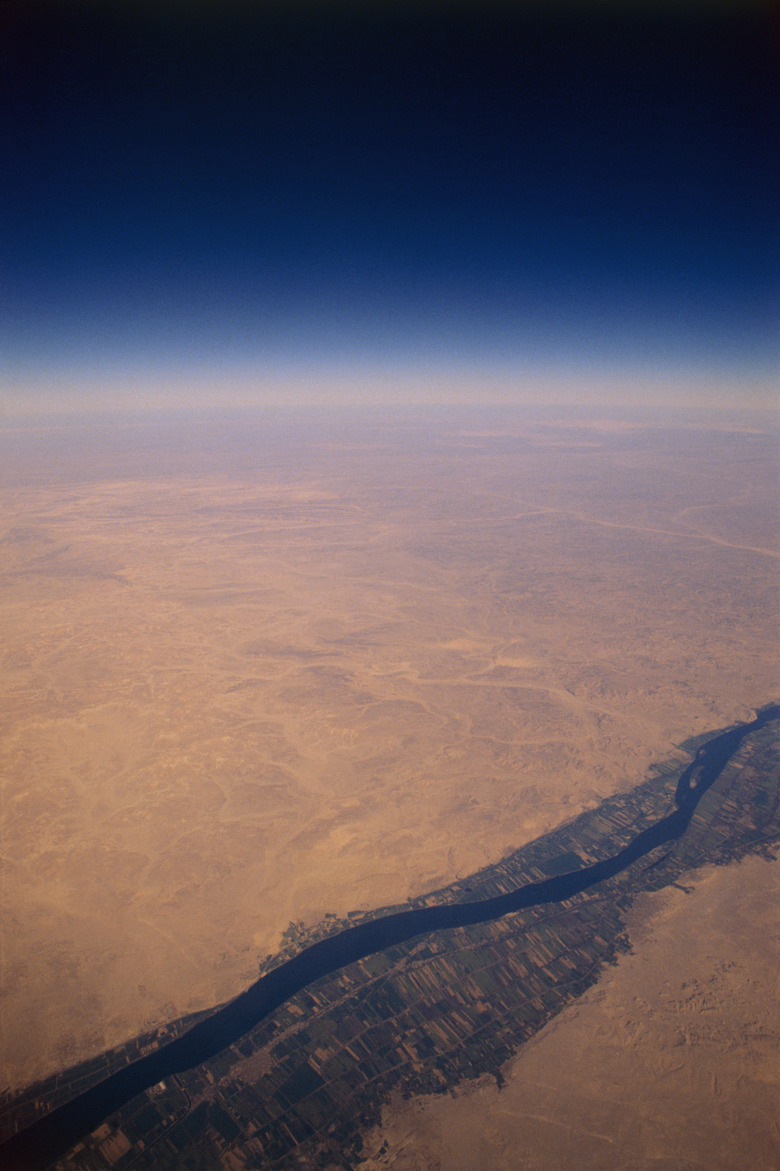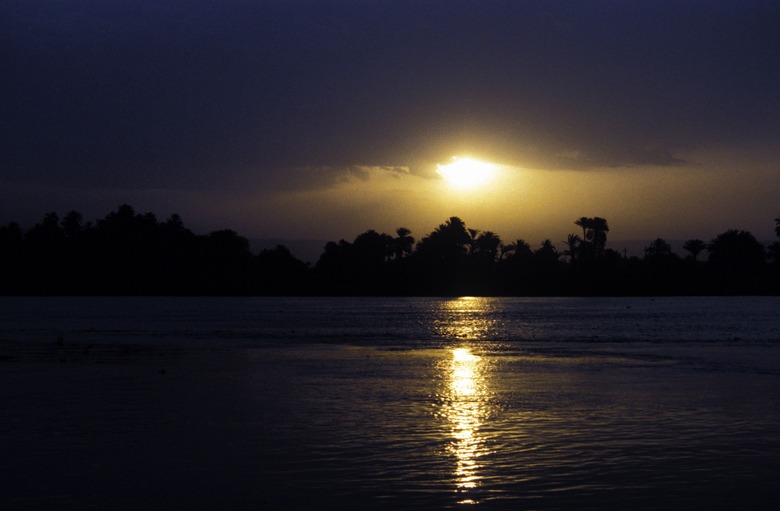Where Were The Farmlands Located In Ancient Egypt?
Agriculture was a key component in the rise of ancient Egyptian civilization, providing the necessary abundance of food to allow for specializations within the society. For thousands of years the flooded banks and delta of the Nile River were annually deposited with rich silt, allowing those areas to be farmed and contrasting sharply with the surrounding Egyptian landscape.
Along the River's Banks
Along the River's Banks
The Nile River is the longest river in the world, with headwaters originating in central Africa. Rainfall from summer monsoons in the Ethiopian Highlands helps the river to pick up silt. This natural fertilizer enriched the soil along its banks, providing narrow strips of ideal farmland as the river followed its course northward through the Sahara. The ancient Egyptians referred to the banks of the Nile as "black land," while the untenable desert was known as "red land."
The Nile Delta
The Nile Delta
The Nile delta is a triangle-shaped area where the river forks into several branches as it flows into the Mediterranean Sea. The rich silt carried by the Nile was deposited along the delta's floodplain by way of these distributaries, which ancient sources numbered between three and 16 and were prone to change course. The region was also laced with man-made canals for irrigation and drainage. In addition to the fertile farmland, the Nile delta supported hunting and fishing, offered papyrus in marshy areas for use in making paper, and provided land for ancient Egyptian villages and cities such as Hermopolis and Alexandria.
Inundation Facts
Inundation Facts
The annual inundation was responsible for the continued fertility of the Nile's banks and delta area. The river rose quickly throughout the summer, reaching a low point in May to its highest flood levels in the middle of September. Stretches of the Nile Valley resembled a lake during the flooding, with some ancient Egyptian cities and villages transformed into temporary islands. When the waters receded, pools were left behind on the floodplain and ancient Egyptian farmers planted their crops in the mud after it was absorbed.
The Surrounding Land
The Surrounding Land
The contrasting barrenness of the desert surrounding the Nile River is part of what makes ancient Egyptian civilization so remarkable. Saharan winds are known to reach hurricane strength, and frequently spawn dangerous sandstorms. Rainfall levels in Egypt were of little consequence, and the Nile River was also the ancient Egyptians' primary water source. The harshness of the Sahara undoubtedly served a reminder to the ancient Egyptians of what life might become without the yearly flooding.
Cite This Article
MLA
Sanders, DaVaun. "Where Were The Farmlands Located In Ancient Egypt?" sciencing.com, https://www.sciencing.com/were-farmlands-located-ancient-egypt-10922/. 24 April 2017.
APA
Sanders, DaVaun. (2017, April 24). Where Were The Farmlands Located In Ancient Egypt?. sciencing.com. Retrieved from https://www.sciencing.com/were-farmlands-located-ancient-egypt-10922/
Chicago
Sanders, DaVaun. Where Were The Farmlands Located In Ancient Egypt? last modified March 24, 2022. https://www.sciencing.com/were-farmlands-located-ancient-egypt-10922/




